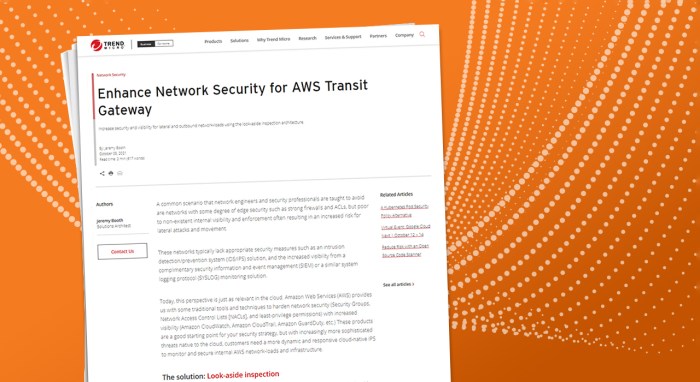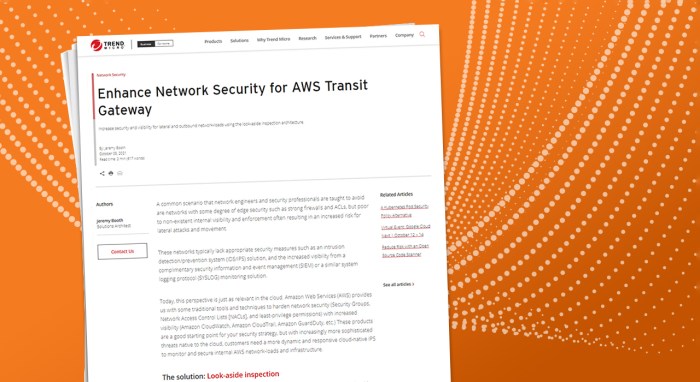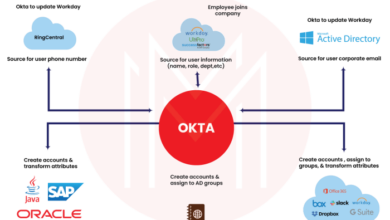
Azure: Improve App Security with Confidence
Azure improve app security – Azure: Improve App Security with Confidence. This is a topic that should be at the forefront of every developer’s mind. We live in a world where data breaches are becoming increasingly common, and it’s more important than ever to protect our applications and the sensitive information they contain.
Azure offers a robust suite of security features that can help you build secure applications and protect them from attack. From securing your network infrastructure to implementing secure development practices, Azure provides a comprehensive approach to application security.
This blog post will dive into the key security features offered by Azure, including Azure Security Center, Azure Key Vault, and more. We’ll also explore how to implement secure development practices, protect against common threats, and monitor your applications for security vulnerabilities.
Get ready to discover how to build secure applications with confidence using the power of Azure.
Understanding Azure Security Features

Azure provides a comprehensive suite of security features designed to protect your applications and data throughout their lifecycle. This robust framework encompasses various security measures that cater to diverse application security needs.
Azure Security Center
Azure Security Center plays a pivotal role in enhancing application security by providing a centralized platform for managing and monitoring security posture across your Azure environment. This service offers comprehensive security recommendations, threat detection, and vulnerability assessments, enabling you to proactively identify and mitigate potential risks.Azure Security Center leverages advanced analytics and machine learning to detect suspicious activities and anomalies, providing real-time insights into potential security threats.
Its capabilities extend beyond traditional security measures, incorporating continuous monitoring, threat intelligence, and automated remediation actions to bolster your application’s security posture.
Azure Key Vault
Azure Key Vault serves as a secure repository for storing sensitive data, such as encryption keys, passwords, and certificates. This service provides a centralized platform for managing and protecting these critical assets, reducing the risk of unauthorized access and data breaches.Azure Key Vault employs robust security measures, including access control, encryption, and auditing capabilities, to safeguard your sensitive data.
Securing your applications in Azure is crucial, especially as remote work becomes the norm. Keeping your data safe means understanding how to best protect it, and that often involves considering individual work styles. For insights on how to optimize your work-from-home setup, check out these work from home tips for every enneagram type.
By understanding your personality type, you can better manage distractions and maximize your productivity, which ultimately contributes to a more secure and efficient work environment.
Its integration with other Azure services, such as Azure Active Directory and Azure Resource Manager, enables seamless integration into your existing security infrastructure.Key Vault offers various features that enhance data security, including:
- Key Rotation:Automatically rotate keys at regular intervals to mitigate the risk of compromised keys.
- Versioning:Maintain multiple versions of keys, allowing you to restore previous versions if necessary.
- Access Control:Grant access to specific users or applications based on their roles and permissions.
- Auditing:Track all access and modifications to keys, providing a comprehensive audit trail.
Implementing Secure Development Practices
Building secure applications is crucial for protecting your data and users. A secure development lifecycle (SDL) is a framework that helps you integrate security into every stage of the software development process, from design to deployment. This approach helps to mitigate risks and vulnerabilities early in the development process, ultimately leading to more secure applications.
Designing a Secure Development Lifecycle
A secure development lifecycle tailored for Azure applications should include the following key phases:
- Security Requirements Gathering and Analysis:This involves identifying security requirements and risks specific to the application and its environment. This step should consider the Azure platform’s security features and best practices.
- Secure Design and Architecture:The design phase focuses on creating a secure architecture that incorporates security principles like least privilege, data isolation, and defense-in-depth. Azure’s security features, such as Azure Security Center and Azure Key Vault, can be leveraged to enhance security at this stage.
Securing your Azure applications is a critical task, and it’s not always easy to balance robust protection with user experience. Sometimes, a little break from the complexities is needed. For me, that break often comes in the form of a delicious dessert, like this baked apple and bourbon ice cream recipe I found online.
It’s a perfect way to recharge and come back to my Azure security tasks with a fresh perspective.
- Secure Coding:This phase emphasizes writing secure code that adheres to best practices and mitigates common vulnerabilities. This includes using secure coding libraries, avoiding common coding errors, and performing regular code reviews.
- Security Testing:This phase involves testing the application for security vulnerabilities using various methods, such as penetration testing, static code analysis, and dynamic code analysis. Azure’s security services, such as Azure Security Center, can help with this process.
- Deployment and Monitoring:Deployment should be done securely, with appropriate security controls in place. Ongoing monitoring is crucial to detect and respond to potential threats and vulnerabilities.
Importance of Code Analysis Tools
Code analysis tools play a vital role in identifying potential security vulnerabilities in your code. These tools can be integrated into the development process, allowing you to detect and fix issues early in the development cycle.
- Static Code Analysis:This type of analysis examines the source code without actually executing it. It can identify potential vulnerabilities such as SQL injection, cross-site scripting (XSS), and buffer overflows.
- Dynamic Code Analysis:This type of analysis examines the application while it is running. It can identify runtime vulnerabilities, such as memory leaks and race conditions.
Best Practices for Secure Coding within the Azure Environment
Here are some best practices for secure coding within the Azure environment:
- Use Azure Security Center:Azure Security Center provides comprehensive security monitoring and threat detection capabilities. It helps identify and mitigate security vulnerabilities in your Azure resources.
- Implement Least Privilege:Grant only the minimum necessary permissions to users and applications. This reduces the potential impact of a security breach.
- Use Secure Libraries and Frameworks:Leverage Azure’s secure libraries and frameworks, such as Azure SDKs and Azure AD, to reduce the risk of common vulnerabilities.
- Encrypt Sensitive Data:Encrypt data at rest and in transit using Azure Key Vault and Azure Data Encryption. This helps protect your data from unauthorized access.
- Validate User Input:Always validate user input to prevent injection attacks, such as SQL injection and cross-site scripting (XSS).
- Regularly Update Software:Keep your Azure services and applications up-to-date with the latest security patches and updates to mitigate known vulnerabilities.
- Use Secure Communication Protocols:Use secure communication protocols like HTTPS and TLS to protect data transmitted over the network.
- Perform Regular Security Audits:Conduct regular security audits to identify and address potential vulnerabilities.
- Implement Secure Logging and Monitoring:Establish robust logging and monitoring mechanisms to detect and respond to security incidents.
Protecting Against Common Threats
Azure applications, like any other software system, are susceptible to various threats. Understanding these threats and implementing appropriate security measures is crucial for ensuring the integrity, confidentiality, and availability of your applications and data. This section will delve into common threats and provide strategies for mitigating them.
Authentication and Authorization Mechanisms
Robust authentication and authorization mechanisms are fundamental for controlling access to your Azure applications. Implementing these mechanisms effectively prevents unauthorized access and data breaches. Authentication verifies the identity of users or applications attempting to access resources. Azure offers a variety of authentication methods, including:
- Azure Active Directory (Azure AD):Provides centralized identity management and single sign-on (SSO) capabilities. It allows users to authenticate with their work or school accounts, offering a secure and efficient way to manage user access.
- Multi-Factor Authentication (MFA):Enhances security by requiring users to provide two or more authentication factors, such as a password and a code sent to their mobile device. This makes it significantly harder for attackers to gain unauthorized access, even if they compromise a password.
- OAuth 2.0:A widely adopted open standard for authorization that allows applications to access protected resources on behalf of users. This approach enables secure delegation of access without sharing user credentials.
Authorization, on the other hand, determines what actions authenticated users or applications are allowed to perform. Azure provides flexible authorization options, including:
- Role-Based Access Control (RBAC):Allows administrators to define roles with specific permissions, assigning users or applications to these roles. This approach simplifies access control and ensures users have only the necessary permissions to perform their tasks.
- Azure Policy:Provides a mechanism for defining and enforcing organizational standards across Azure resources, including access control policies. This allows you to set granular rules for resource access, ensuring compliance with your security requirements.
By implementing strong authentication and authorization mechanisms, you can effectively control access to your Azure applications, minimizing the risk of unauthorized access and data breaches.
Preventing and Responding to SQL Injection Attacks
SQL injection attacks are a common threat to web applications. Attackers exploit vulnerabilities in application code to manipulate database queries, potentially accessing sensitive data or modifying database records. To prevent SQL injection attacks, follow these best practices:
- Use Parameterized Queries or Prepared Statements:These methods separate user input from the SQL query, preventing malicious code from being executed. For example, instead of directly concatenating user input into the query, use parameterized queries to bind user input as parameters. This ensures that the database engine treats the input as data rather than code.
Just like how you might want to revamp a room before decorating it, securing your Azure applications is a crucial step before you can truly optimize their performance. It’s like starting with a clean slate, ready for a fresh coat of paint and a new layout.
Take a look at abm studio the bedroom before for inspiration, and remember that Azure offers a suite of tools like Azure Security Center and Azure Sentinel to help you build a secure foundation for your applications.
- Input Validation and Sanitization:Carefully validate user input to ensure it conforms to expected formats and data types. Sanitize input by removing potentially harmful characters or escaping special characters before using it in queries. This reduces the risk of injection attacks by preventing malicious code from being injected into queries.
- Least Privilege Principle:Ensure database users have only the necessary permissions to perform their assigned tasks. This principle limits the potential damage caused by an attack, as attackers will have limited access to sensitive data.
- Database Auditing and Monitoring:Implement database auditing and monitoring to track user activity and detect suspicious behavior. This can help identify and respond to SQL injection attacks in a timely manner.
In addition to prevention, it’s essential to have a plan for responding to SQL injection attacks. This includes:
- Incident Response Plan:Develop a comprehensive incident response plan that Artikels the steps to take when a SQL injection attack occurs. This plan should include procedures for containing the attack, investigating the incident, and restoring affected systems.
- Vulnerability Scanning and Patching:Regularly scan your applications for vulnerabilities and promptly apply security patches to address known vulnerabilities. This helps prevent attackers from exploiting known weaknesses.
By implementing these measures, you can significantly reduce the risk of SQL injection attacks and protect your Azure applications and data from unauthorized access or modification.
Securing Network and Infrastructure
Securing the network infrastructure is crucial for protecting Azure applications. A robust network security strategy involves implementing a layered approach, encompassing measures like network segmentation, access control, and threat detection.
Network Security Groups (NSGs)
Network security groups (NSGs) are fundamental components of Azure’s network security architecture. They act as virtual firewalls, enabling granular control over inbound and outbound traffic to and from Azure resources. NSGs provide a flexible and scalable mechanism for defining network security rules.
Each rule specifies the following:
- Source and Destination:These can be defined using IP addresses, subnets, or Azure resources, such as virtual machines or virtual networks.
- Protocol:Specifies the network protocol, such as TCP, UDP, or ICMP.
- Port Range:Defines the range of ports that the rule applies to.
- Action:Determines the action to take on matching traffic, such as “Allow” or “Deny”.
- Priority:Sets the order in which rules are evaluated, with higher priority rules taking precedence.
NSGs can be applied to various network resources, including subnets, network interfaces, and Azure load balancers. They allow for the creation of comprehensive network security policies, enabling the enforcement of access control and traffic filtering at the network level.
Secure Deployment Architecture
A well-designed deployment architecture plays a crucial role in securing Azure applications. It involves segmenting and isolating different components of the application and network infrastructure.
- Network Segmentation:Dividing the network into distinct segments, each with its own security policies, helps to limit the impact of security breaches. This approach can be implemented by creating separate virtual networks for different applications or environments, such as development, testing, and production.
- Isolation:Isolating sensitive resources, such as databases and web servers, from the public internet enhances security. This can be achieved using techniques like private networks, virtual private networks (VPNs), and Azure Bastion.
- Least Privilege:Implementing the principle of least privilege ensures that resources only have the necessary permissions to perform their functions. This reduces the potential attack surface and minimizes the impact of compromised accounts.
- Multi-Factor Authentication (MFA):Enforcing MFA for all access to Azure resources adds an extra layer of security. This requires users to provide two or more forms of authentication, making it significantly more difficult for attackers to gain unauthorized access.
“By implementing these security measures, you can build a robust and secure network infrastructure for your Azure applications.”
Monitoring and Incident Response: Azure Improve App Security
Proactive monitoring and a robust incident response plan are crucial for maintaining the security of Azure applications. By continuously monitoring for potential threats and vulnerabilities, you can detect and respond to incidents swiftly, minimizing damage and ensuring business continuity.
Azure Security Center for Threat Detection and Incident Response
Azure Security Center provides a centralized platform for monitoring and responding to security threats across your Azure environment. It offers comprehensive threat detection capabilities, including:
- Real-time threat detection:Azure Security Center continuously monitors your Azure resources for suspicious activity, using machine learning and threat intelligence to identify potential threats.
- Vulnerability assessment:It scans your applications and infrastructure for known vulnerabilities, providing recommendations for remediation.
- Security recommendations:Based on its analysis, Azure Security Center provides actionable recommendations to enhance your security posture.
- Security alerts:It generates alerts when potential threats are detected, enabling you to respond promptly.
Azure Security Center also facilitates incident response by providing tools for:
- Incident investigation:It provides detailed information about security incidents, including the affected resources, the nature of the threat, and the timeline of events.
- Incident remediation:Azure Security Center offers guidance and tools to help you address security incidents effectively.
- Incident reporting:It provides reports on security incidents, enabling you to track your security posture and identify areas for improvement.
Conducting Security Audits and Vulnerability Assessments
Regular security audits and vulnerability assessments are essential for identifying and mitigating security risks in Azure applications. These assessments can be conducted manually or using automated tools.
- Manual security audits:These involve a thorough review of your Azure environment, including your applications, infrastructure, and security configurations, to identify potential vulnerabilities and misconfigurations.
- Automated vulnerability assessments:Tools like Azure Security Center and third-party vulnerability scanners can automate the process of identifying vulnerabilities in your applications and infrastructure.
It is important to note that:
Vulnerability assessments should be conducted regularly, ideally on a monthly or quarterly basis, to ensure that any newly discovered vulnerabilities are addressed promptly.
Case Studies
Seeing is believing, and in the world of cybersecurity, real-world examples are invaluable. This section explores how organizations across various industries have successfully leveraged Azure security features to protect their applications and achieve compliance with industry regulations.
Healthcare: Protecting Sensitive Patient Data
Healthcare organizations handle extremely sensitive data, making robust security a top priority. One prominent example is [Hospital Name], a large healthcare provider that implemented Azure Security Center to enhance their security posture. Azure Security Center provided comprehensive threat detection and vulnerability assessment capabilities, allowing them to proactively identify and mitigate potential security risks.
This proactive approach helped [Hospital Name]comply with strict regulations like HIPAA (Health Insurance Portability and Accountability Act), ensuring the confidentiality, integrity, and availability of patient data.
Financial Services: Safeguarding Financial Transactions
The financial services industry is a prime target for cyberattacks due to the vast amounts of sensitive financial data it handles. [Financial Institution Name], a leading financial institution, implemented Azure Sentinel to detect and respond to security threats in real-time. Azure Sentinel provided a centralized platform for security information and event management (SIEM), enabling them to correlate security events across their entire infrastructure and identify potential threats early on.
This proactive approach helped [Financial Institution Name]prevent data breaches and ensure the integrity of financial transactions.
Retail: Securing Customer Data and Transactions
E-commerce platforms handle vast amounts of customer data, including personal information and payment details. [Retailer Name], a major online retailer, implemented Azure Key Vault to securely store and manage their cryptographic keys. Azure Key Vault provided a centralized and highly secure solution for key management, reducing the risk of key compromise and ensuring the confidentiality and integrity of customer data and transactions.
Government: Protecting National Security, Azure improve app security
Government agencies handle sensitive information that is critical to national security. [Government Agency Name], a government agency responsible for national security, implemented Azure Security Center and Azure Sentinel to enhance their security posture. Azure Security Center provided comprehensive threat detection and vulnerability assessment capabilities, while Azure Sentinel provided a centralized platform for security information and event management (SIEM).
This combination of security solutions allowed [Government Agency Name]to proactively identify and mitigate potential security risks, ensuring the confidentiality, integrity, and availability of sensitive information.
Education: Protecting Student Data and Infrastructure
Educational institutions handle sensitive student data and critical infrastructure. [University Name], a large university, implemented Azure Security Center to protect its student data and infrastructure from cyberattacks. Azure Security Center provided comprehensive threat detection and vulnerability assessment capabilities, allowing them to proactively identify and mitigate potential security risks.
This proactive approach helped [University Name]ensure the confidentiality, integrity, and availability of student data and maintain the security of its critical infrastructure.







